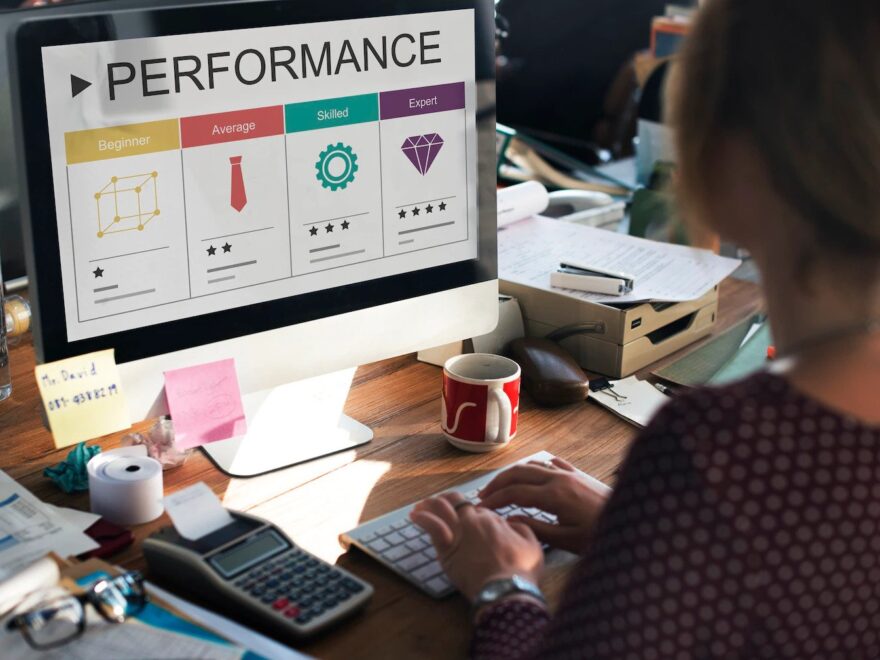Organizations strive to maximize productivity and achieve their goals in today’s competitive business landscape. One crucial factor in achieving this is evaluating employee performance effectively. Employee performance evaluation is not just a routine process but a powerful tool that can transform the workforce and drive success.
Performance evaluations contribute to employee growth, engagement, and overall productivity by providing valuable insights, feedback, and recognition. In this article, we will explore the significant impact of employee performance evaluation on workplace productivity and delve into effective strategies for implementing this process.
Establishing Clear Performance Expectations:
Setting clear performance expectations is the foundation for practical performance evaluation. Employees must understand what is expected of them to align their efforts accordingly. By defining specific goals, targets, and key performance indicators (KPIs), organizations create a framework that guides employees’ work and enables them to focus on relevant areas. When expectations are transparent, employees have a clear direction and are more likely to channel their efforts toward achieving desired outcomes.
Identifying Strengths and Areas for Improvement:
Employee Evaluation software offers an opportunity to assess individual strengths and areas for improvement. By providing constructive feedback, managers can help employees identify their strengths and leverage them to excel in their roles. Additionally, pinpointing areas for improvement allows employees to address skill gaps and enhance their performance. This targeted approach to development leads to a more productive and skilled workforce.
Enhancing Communication and Collaboration:
Effective performance evaluations facilitate open and honest communication between employees and their managers. It creates a platform for meaningful discussions about job responsibilities, progress, challenges, and career aspirations. Regular feedback sessions enable managers to understand employees’ concerns, offer guidance, and align their expectations. This open dialogue strengthens the employee-manager relationship, fosters trust and promotes collaboration within the workplace.
Encouraging Goal Alignment and Personal Growth:
It provide an opportunity to align individual goals with organizational objectives. By mapping employee goals to larger company goals, employees can see how their work contributes to the organization’s overall success. This alignment creates a sense of purpose and helps employees stay motivated and engaged. Furthermore, performance evaluations can identify opportunities for professional development and growth. Offering training, mentorship, or career advancement prospects based on evaluation results shows employees that their growth is valued, inspiring them to improve their performance continually.
Read this article also: Benefits of candidate sourcing tool for Recruiters
Recognizing and Rewarding Performance:
Employee performance evaluations are an excellent platform for recognizing and rewarding exceptional performance. Acknowledging employee accomplishments, efforts, and contributions can significantly boost morale and motivation. Recognitions can take various forms, such as verbal praise, bonuses, promotions, or opportunities for additional responsibilities. When employees feel appreciated for their hard work, they are more likely to feel valued and committed to the organization’s success, leading to increased productivity.
Employee performance evaluation is a powerful tool for organizations to enhance workplace productivity. It establishes clear expectations, identifies areas for improvement, improves communication, encourages goal alignment, and recognizes exceptional performance.
Need of Employee Performance Evaluation Software
Streamlined Evaluation Process:
Employee performance evaluation software automates and streamlines the entire evaluation process. It eliminates the need for manual paperwork, spreadsheets, and email exchanges, making the process more efficient and time-saving. The software enables managers and HR professionals to easily create evaluation forms, set deadlines, send reminders, and track the progress of evaluations.
Centralized Data Management:
This software provides a centralized platform to store and manage evaluation data. It allows organizations to maintain a comprehensive database of employee performance records, making it easier to track progress over time, identify trends, and compare performance across individuals or teams. Having a centralized system ensures data accuracy, accessibility, and security.
Standardization and Consistency:
Organizations can establish standardized evaluation criteria, rating scales, and performance metrics with performance evaluation software. This ensures consistency across evaluations and eliminates bias or subjectivity that may arise from manual evaluations. Organizations can make fair and unbiased assessments by promoting objectivity, leading to more accurate performance evaluations.
Real-time Feedback and Coaching:
Performance evaluation software enables real-time feedback and coaching opportunities. Managers can provide immediate feedback to employees based on evaluation results, highlighting areas of strength and improvement. The software often includes features like comment sections, goal-setting tools, and development plans, fostering ongoing communication and employee growth.
Performance Analytics and Insights:
Employee performance evaluation software generates powerful analytics and insights. Organizations can analyze performance data to identify trends, patterns, and areas where additional support or training may be required. These insights help organizations make informed decisions regarding promotions, talent management, succession planning, and overall performance improvement strategies.
Continuous Performance Management:
Traditional annual or biannual evaluations are often insufficient for effective performance management. Performance evaluation software supports continuous performance management by enabling ongoing feedback, check-ins, and goal tracking. This shift from a once-a-year approach to continuous performance management promotes agility, adaptability, and employee development.
Integration with HR Systems:
Many employee performance evaluation software solutions integrate seamlessly with other HR systems like payroll, talent management(talent acquisition software), and learning management systems. This integration ensures that evaluation data is connected to other HR processes, facilitating a holistic view of employee performance and enabling organizations to make strategic decisions based on comprehensive data.
Conclusion
Organizations create a culture of continuous improvement and growth by implementing effective performance evaluation processes. Employees who receive meaningful feedback, feel valued, and have development opportunities become more engaged and motivated, leading to increased productivity and overall success. Prioritizing employee performance evaluation is a win-win strategy that benefits both the employees and the organization.

